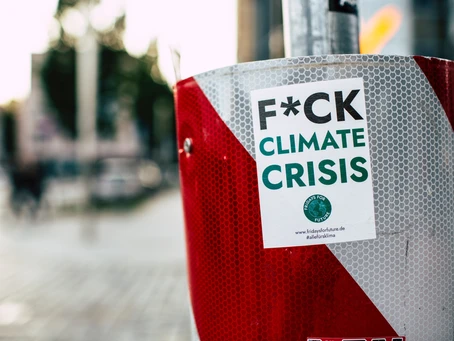Do climate change communications need more f***ing aggression?
By Hector L Torres Vera
Title: Exploring the Influence of Aggressive and Target-Framing Messages on Pro Environmental Behavior
Author(s) and Year: Shupei Yuan and Colin Kuehl, 2023
Journal: Science Communication
TL;DR: The planet is facing an increasingly disastrous climate crisis. This research demonstrates that aggressive communication concerning climate change decreases the likelihood of pro-environmental behaviors, such as support for policy. The authors reason this is due to expectancy violation – when audience expectations of how communicators should behave are abruptly challenged.
Why I chose this paper: We’ve all been there—well—at least I have. The boiling point of passion and frustration when arguing with someone about climate change. The pivotal millisecond in our brain when we just want to say: “What the f*** is wrong with you!?” As science communicators who want to help protect our planet, it’s critical to assess how these aggressions can change audience perception for the worse.
The frustrations of communicating climate change
The frustration of communicating climate change is a topic that has received a lot of attention in recent years. Despite the overwhelming evidence that human activity is causing significant harm to the planet, many people remain indifferent or skeptical about the need to take action.
This frustration was on display when science communicator Bill Nye appeared on the TV show Last Week Tonight in May 2019 and delivered an angry rant about the need to find solutions for the climate crisis:
“What I’m saying is the planet is on f*cking fire! There are a lot of things we could do to put it out– are any of them free? No, of course not. Nothing’s free, you idiots! Grow the f*ck up! You’re not children anymore. I didn’t mind explaining photosynthesis to you when you were 12, but you’re adults now, and this is an actual crisis. Got it?” – Bill Nye
But, does aggressive communication actually work to change people’s behavior when it comes to climate change? That’s the question that researchers Yuan and Kuelh set out to explore in their recent study. Using a socio-psychological framework known as expectancy violations theory (EVT), they examined how people respond to aggressive communication about climate change.
How do people respond to aggressive communication?
Yuan describes aggressive communication in her previous work as a “style of language that combines intense emotion with lack of respect and an attack on persons.” Examples of aggressive communication include: raising one’s voice, criticizing the person and not their arguments, threats, and placing blame.
According to EVT, individuals hold certain expectations in any given situation. People may build these on social norms and characteristics of the communicators. When those expectations are challenged, they can negatively or positively affect how well the message of the communicator is received.
Going beyond only looking at the use of aggression, Yuan & Kuelh explored whether messages that are aggressive towards institutions, such as government or corporations, challenge expectations differently compared to messages that target individuals. They also wanted to know if this framing of responsibility affects whether people are more or less likely to behave in ways that are better for the planet on the individual and public scales.
Studying expectancy violation relative to target audiences
Yuan and Kuelh conducted two separate studies to understand aggression in climate change communications. In study one, they created a short science blog article advocating for changes in behavior in response to water scarcity in California due to climate change. This article was modified into four versions: with and without aggressive elements, and placing the responsibility on either the general public or politicians. In the second experiment, Yuan and Kuelh used a more representative sample selection of the US population and focused more on a general view of climate change in the US and the impact of the government as a whole.
“Face the damning facts, people! California’s new water reality,” (aggressive x target public)
“Please face the facts, politicians. California’s new water reality.” (neutral x target politicians)
Phrases representing aggressive communication and targets in the test articles.
In both experiments, participants completed a survey after reading the articles. The survey measured key variables, such as expectancy violation (i.e., whether the author’s writing was appropriate as a science blogger), private sphere behavior intentions (i.e., whether the participant intends to replace their lawn with drought-tolerant plants), and public sphere behavior intentions (i.e., whether the participant intends to sign petitions supporting investment in water infrastructure).
Well I’ll be damned— darned
Yuan and Kuelh present mixed results but they noticed a trend consistent with previous studies: aggression negatively impacts people’s willingness to engage in pro-environmental behaviors. Participants reported feeling a sense of expectancy violation when exposed to aggressive communication, which made them less likely to engage in behaviors that are better for the environment. Additionally, shifting responsibility from the public to government or vice versa did not affect people’s intentions to behave in environmentally-friendly ways.
Interestingly, The researchers did find that when aggressive communication did not violate expectations, it could increase people’s intentions for pro-environmental behavior. In other words, if people aren’t surprised by profanity, aggressive communication could actually increase personal behaviors to help protect the environment.
Overall, Yuan and Kuelh’s study highlights the importance of communication style when it comes to motivating pro-environmental behaviors. While aggressive communication may be attention-grabbing, it can ultimately be counterproductive if it leads to expectancy violation and decreased engagement in pro-environmental behaviors. Communicators and advocates for climate action should consider using messaging that does not violate expectations and focuses on positive, actionable steps that individuals can take to mitigate climate change.
Edited by Sam Ridgeway and Niveen AbiGhannam
Cover image credit: Markus Spiske

